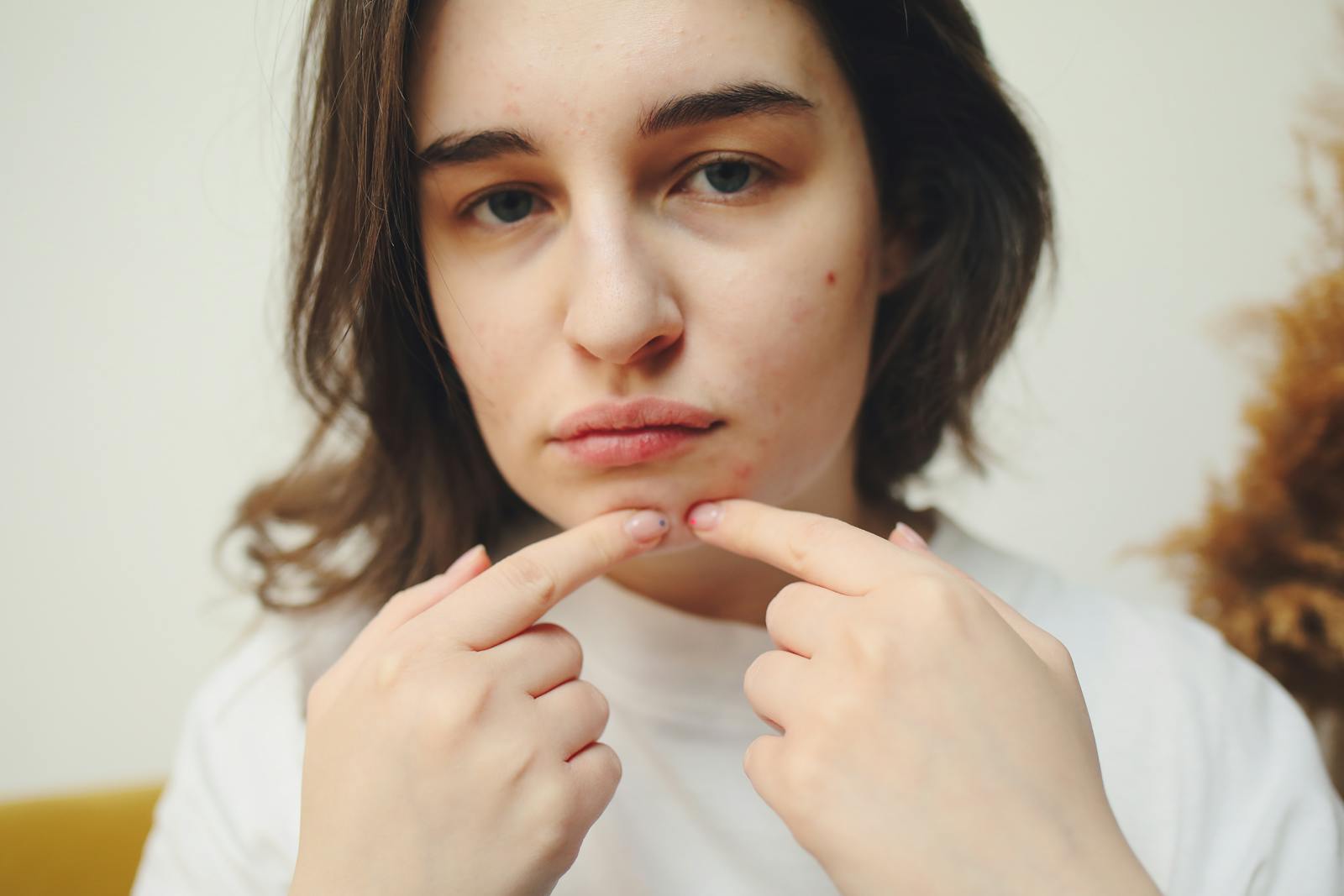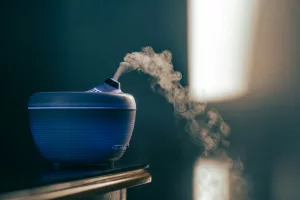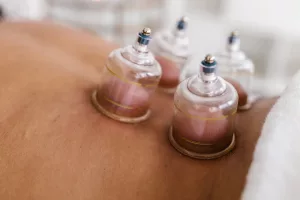Pimples, also known as acne, are a common skin condition that affects people of all ages. While pimples are most common during adolescence, they can occur at any stage of life and often result from clogged pores, bacterial infections, hormonal changes, or excess sebum production. Pimples can appear on the face, neck, chest, back, or shoulders and can vary in severity from mild whiteheads and blackheads to more painful and inflamed cysts.
While there are numerous over-the-counter and prescription medications available for acne treatment, many people prefer to use natural remedies to treat pimples. Natural remedies can be gentler on the skin, free from harsh chemicals, and less likely to cause side effects. In this comprehensive guide, we’ll explore effective and natural ways to get rid of pimples and prevent future breakouts.
1. Tea Tree Oil: A Natural Antiseptic
One of the most popular natural treatments for pimples is tea tree oil, a powerful antiseptic and antibacterial agent. Tea tree oil is extracted from the leaves of the Melaleuca alternifolia tree and has been used for centuries to treat a variety of skin conditions.
Tea tree oil is effective in treating pimples because it helps to kill acne-causing bacteria, reduce inflammation, and promote healing. Its antimicrobial properties make it an excellent choice for targeting pimples, while its anti-inflammatory effects help soothe the skin and reduce redness.
How Tea Tree Oil Works:
- Kills acne-causing bacteria: Tea tree oil contains terpenes, which are compounds that have been shown to kill bacteria associated with acne.
- Reduces inflammation: The oil helps soothe inflamed skin and reduce redness and swelling around the pimples.
- Promotes healing: Tea tree oil supports the healing process by reducing the size of pimples and preventing infection.
How to Use:
- Dilute tea tree oil by mixing 2-3 drops with a carrier oil like coconut oil or jojoba oil.
- Apply the mixture to the affected areas using a cotton swab or clean fingers.
- Leave it on for at least 15-20 minutes, or overnight for best results, and then rinse off with warm water.
- Use this treatment 1-2 times a day until the pimples heal.
Tips:
- Always dilute tea tree oil before applying it to the skin, as using it undiluted can cause irritation.
- Perform a patch test before using tea tree oil to ensure that your skin doesn’t react negatively.
2. Honey: A Soothing and Healing Agent
Honey has long been valued for its natural healing properties, and it’s an excellent remedy for treating pimples. Honey is a natural antibacterial and anti-inflammatory substance that helps cleanse the skin, prevent infection, and reduce inflammation. Its soothing properties make it ideal for sensitive skin, while its moisturizing effects keep the skin hydrated without clogging pores.
Honey also promotes wound healing and helps reduce the appearance of scars, making it an effective natural remedy for acne-prone skin.
How Honey Works:
- Antibacterial: Honey contains natural enzymes that help kill acne-causing bacteria.
- Anti-inflammatory: It soothes irritated skin and reduces the redness and swelling associated with pimples.
- Hydrating: Honey keeps the skin moisturized and helps maintain its natural barrier without contributing to excess oil production.
How to Use:
- Apply a small amount of raw organic honey directly to the pimples.
- Leave it on for 15-30 minutes, then rinse off with warm water.
- For added benefits, you can mix honey with cinnamon, which has additional antibacterial properties.
- Repeat this treatment 1-2 times daily until the pimples heal.
Tips:
- Use raw, unprocessed honey for best results, as processed honey may lose some of its beneficial properties.
- Honey is gentle enough for sensitive skin and can be combined with other natural ingredients like turmeric or lemon juice.
3. Aloe Vera: Nature’s Soothing Gel
Aloe vera is a popular natural remedy for treating pimples due to its soothing, hydrating, and anti-inflammatory properties. It contains polysaccharides that help stimulate skin repair, reduce redness, and promote faster healing of pimples. Aloe vera also has antimicrobial properties that prevent bacteria from worsening acne.
Using aloe vera regularly can help reduce the occurrence of pimples and improve overall skin texture, making it a valuable addition to any skincare routine.
How Aloe Vera Works:
- Soothes and hydrates: Aloe vera helps calm irritated skin and provides moisture without clogging pores.
- Reduces inflammation: Aloe’s anti-inflammatory properties help minimize redness and swelling around pimples.
- Promotes healing: Aloe contains compounds that support skin repair and reduce the appearance of scars.
How to Use:
- Apply fresh aloe vera gel directly to the affected areas of your skin.
- Leave it on for 15-20 minutes, then rinse with warm water.
- Repeat this process twice daily to help heal pimples and reduce irritation.
Tips:
- Use fresh aloe vera gel from the plant for the best results, or opt for a 100% pure aloe vera product.
- Aloe vera can be combined with other natural ingredients like tea tree oil or turmeric for added benefits.
4. Apple Cider Vinegar: A Natural Astringent
Apple cider vinegar (ACV) is a powerful natural remedy for treating pimples due to its ability to balance the skin’s pH, fight bacteria, and reduce excess oil. ACV contains acetic acid, which acts as a natural astringent to remove dirt, oil, and bacteria from the skin. It also helps unclog pores and reduce inflammation, making it effective in treating pimples.
However, apple cider vinegar is highly acidic, so it should always be diluted before applying to the skin to avoid irritation.
How Apple Cider Vinegar Works:
- Balances pH: ACV helps restore the skin’s natural pH, making it less prone to breakouts.
- Kills bacteria: Its antimicrobial properties kill bacteria that can lead to pimples.
- Removes excess oil: ACV acts as a natural astringent, reducing oil production and preventing clogged pores.
How to Use:
- Mix one part apple cider vinegar with three parts water to dilute the vinegar.
- Apply the mixture to your skin using a cotton ball or pad, focusing on the affected areas.
- Leave it on for 5-10 minutes, then rinse with warm water.
- Use this treatment once daily to reduce pimples and prevent new ones from forming.
Tips:
- Always dilute ACV before applying it to the skin to avoid irritation or burns.
- Perform a patch test before using ACV on your face, especially if you have sensitive skin.
5. Green Tea: A Powerful Antioxidant
Green tea is well-known for its antioxidant properties, which help fight inflammation and reduce acne. When applied topically, green tea helps reduce sebum production, decrease the severity of pimples, and prevent future breakouts. Green tea also contains epigallocatechin gallate (EGCG), a compound that helps reduce inflammation and bacterial growth in the skin.
Drinking green tea can also provide internal benefits for your skin by reducing inflammation and promoting detoxification.
How Green Tea Works:
- Reduces sebum production: Green tea helps control oil production, which can lead to fewer clogged pores.
- Fights inflammation: EGCG in green tea reduces redness, swelling, and irritation caused by pimples.
- Kills bacteria: Green tea has natural antibacterial properties that help prevent pimples.
How to Use:
- Brew a cup of green tea and let it cool.
- Use a cotton ball to apply the cooled tea to the affected areas of your skin.
- Leave it on for 10-15 minutes, then rinse with warm water.
- You can also use green tea as a toner after cleansing your face.
- Repeat this treatment once or twice daily for best results.
Tips:
- Drink 1-2 cups of green tea daily to promote overall skin health and reduce inflammation.
- Green tea can be combined with honey or aloe vera for added benefits.
6. Witch Hazel: A Natural Astringent
Witch hazel is a natural astringent that helps tighten the skin, remove excess oil, and reduce inflammation. It is commonly used to treat pimples because it helps dry out excess oil without over-drying the skin. Witch hazel is also effective in reducing redness and swelling, making it a popular choice for soothing irritated skin.
Witch hazel works by shrinking pores, which helps prevent dirt and oil from getting trapped in the skin, thereby reducing the likelihood of breakouts.
How Witch Hazel Works:
- Tightens pores: Witch hazel helps shrink pores, preventing dirt and oil from clogging them.
- Removes excess oil: It acts as a natural astringent, drying out excess oil and reducing pimples.
- Soothes inflammation: Witch hazel reduces redness and swelling around pimples.
How to Use:
- Apply pure witch hazel to a cotton pad and gently wipe it over the affected areas of your skin.
- Use this treatment once or twice daily to help clear pimples and reduce oil.
Tips:
- Choose a pure witch hazel product that doesn’t contain alcohol or artificial fragrances, as these can irritate the skin.
- Witch hazel can be used as a toner after cleansing to keep pores clear and prevent pimples.
7. Turmeric: A Natural Anti-Inflammatory
Turmeric is a powerful anti-inflammatory and antibacterial herb that has been used for centuries to treat various skin conditions, including pimples. The active compound in turmeric, curcumin, helps reduce redness, swelling, and inflammation associated with pimples. Turmeric also has antimicrobial properties, making it effective at killing bacteria that cause acne.
Turmeric can be used topically as a face mask or spot treatment to reduce the severity of pimples and promote healing.
How Turmeric Works:
- Reduces inflammation: Curcumin in turmeric helps calm irritated skin and reduce redness and swelling.
- Kills bacteria: Turmeric has natural antimicrobial properties that help kill acne-causing bacteria.
- Promotes healing: Turmeric speeds up the healing process and reduces the appearance of scars.
How to Use:
- Mix 1 teaspoon of turmeric with a few drops of water or honey to form a paste.
- Apply the paste directly to the affected areas of your skin.
- Leave it on for 15-20 minutes, then rinse with warm water.
- Use this treatment 1-2 times a week for best results.
Tips:
- Turmeric can temporarily stain the skin yellow, so it’s best to use it in the evening or before bed.
- You can combine turmeric with other natural ingredients like yogurt or aloe vera for added benefits.
8. Lemon Juice: A Natural Exfoliant
Lemon juice is a natural source of citric acid, which acts as a gentle exfoliant to remove dead skin cells and unclog pores. The vitamin C in lemon juice helps brighten the skin and reduce the appearance of dark spots caused by pimples. Lemon juice also has natural antibacterial properties, making it effective in treating pimples caused by bacterial infections.
However, lemon juice is highly acidic, so it should be used with caution and always diluted to avoid irritation.
How Lemon Juice Works:
- Exfoliates: Citric acid in lemon juice helps remove dead skin cells and unclog pores.
- Kills bacteria: Lemon juice has natural antibacterial properties that help fight acne-causing bacteria.
- Brightens skin: Vitamin C helps reduce dark spots and brighten the complexion.
How to Use:
- Mix 1 tablespoon of lemon juice with 1 tablespoon of water to dilute it.
- Apply the mixture to your pimples using a cotton swab or pad.
- Leave it on for 10-15 minutes, then rinse with warm water.
- Use this treatment 1-2 times a week for best results.
Tips:
- Always dilute lemon juice before applying it to the skin to prevent irritation.
- Avoid direct sun exposure after using lemon juice, as it can make your skin more sensitive to the sun.
9. Baking Soda: A Natural Exfoliant and pH Balancer
Baking soda is a natural exfoliant that helps remove dead skin cells and unclog pores, making it an effective remedy for pimples. Baking soda also helps balance the skin’s pH levels, reducing the likelihood of breakouts. Additionally, baking soda has mild antiseptic properties that help prevent bacterial infections.
While baking soda can be effective in small doses, it’s important to use it sparingly, as overuse can dry out the skin and disrupt its natural barrier.
How Baking Soda Works:
- Exfoliates: Baking soda helps remove dead skin cells and prevent clogged pores.
- Balances pH: It helps restore the skin’s natural pH balance, reducing breakouts.
- Kills bacteria: Baking soda has mild antibacterial properties that help prevent pimples.
How to Use:
- Mix 1 teaspoon of baking soda with enough water to form a paste.
- Apply the paste to the affected areas of your skin and leave it on for 10-15 minutes.
- Rinse off with warm water and follow up with a moisturizer.
- Use this treatment 1-2 times a week to help clear pimples.
Tips:
- Baking soda can be drying, so avoid using it more than twice a week and always moisturize afterward.
- Do a patch test before using baking soda to ensure that your skin doesn’t react negatively.
10. Ice: A Simple Inflammation Reducer
While ice won’t treat pimples directly, it can help reduce inflammation, redness, and swelling associated with pimples. Applying ice to a pimple can help soothe the skin and reduce the size of the blemish, making it less noticeable.
Ice is particularly effective for reducing the pain and swelling of cystic acne or large, inflamed pimples.
How Ice Works:
- Reduces inflammation: Ice helps minimize swelling and redness around pimples.
- Soothes irritation: It provides immediate relief for painful pimples by numbing the area.
- Shrinks pimples: Ice can help reduce the size of large pimples by constricting blood vessels.
How to Use:
- Wrap an ice cube in a clean cloth or paper towel.
- Apply the ice to the affected area for 1-2 minutes at a time.
- Repeat this process 2-3 times a day to reduce inflammation and swelling.
Tips:
- Don’t apply ice directly to the skin, as it can cause damage or frostbite.
- Ice is especially helpful for painful cysts or inflamed pimples.
11. Oatmeal: A Soothing Mask for Pimples
Oatmeal is a gentle and soothing natural ingredient that can help reduce redness, inflammation, and irritation caused by pimples. Oatmeal is rich in antioxidants and helps absorb excess oil, making it an effective remedy for oily and acne-prone skin. Additionally, oatmeal contains saponins, which are natural cleansers that help remove dirt and oil from the pores.
Using an oatmeal mask can help calm the skin, reduce the severity of pimples, and prevent future breakouts.
How Oatmeal Works:
- Soothes inflammation: Oatmeal calms irritated skin and reduces redness and swelling.
- Absorbs excess oil: Oatmeal helps remove excess oil from the skin, preventing clogged pores.
- Cleanses the skin: The saponins in oatmeal help cleanse the skin and remove impurities.
How to Use:
- Cook plain oatmeal and let it cool to room temperature.
- Apply the oatmeal to your face as a mask, focusing on the areas with pimples.
- Leave the mask on for 15-20 minutes, then rinse with warm water.
- Use this mask 2-3 times a week to help clear pimples and soothe the skin.
Tips:
- Avoid using oatmeal with added sugars or flavorings, as these can irritate the skin.
- Oatmeal masks can be combined with other ingredients like honey or yogurt for added benefits.
12. Zinc: A Nutrient for Skin Health
Zinc is an essential mineral that plays a key role in skin health and immune function. Studies have shown that people with acne often have lower levels of zinc in their bodies, and increasing zinc intake can help reduce the severity of pimples. Zinc helps reduce inflammation, prevent bacterial growth, and support skin healing.
Zinc can be taken orally as a supplement or applied topically in the form of zinc oxide creams to treat pimples.
How Zinc Works:
- Reduces inflammation: Zinc helps calm inflamed skin and reduce redness associated with pimples.
- Prevents bacterial growth: Zinc has antimicrobial properties that help prevent the growth of acne-causing bacteria.
- Supports skin healing: Zinc promotes the healing of damaged skin and reduces the risk of scarring.
How to Use:
- Take a zinc supplement according to the dosage instructions on the label, or consult a healthcare professional for guidance.
- Alternatively, apply a zinc oxide cream directly to pimples to reduce inflammation and promote healing.
Tips:
- Zinc supplements can cause nausea or stomach upset in some people, so take them with food.
- Zinc oxide creams can also be used as a spot treatment for pimples.
13. Cucumber: A Cooling and Hydrating Remedy
Cucumber is a natural remedy for soothing and hydrating the skin, making it an excellent treatment for pimples. Cucumbers contain water, antioxidants, and vitamins that help reduce inflammation, hydrate the skin, and promote healing.
Applying cucumber slices or cucumber juice to pimples can help reduce redness, calm irritation, and provide relief from painful pimples.
How Cucumber Works:
- Hydrates the skin: Cucumber provides moisture to the skin without clogging pores.
- Reduces inflammation: The cooling properties of cucumber help soothe irritated skin and reduce redness.
- Promotes healing: Cucumbers contain vitamins and antioxidants that support skin repair and reduce the appearance of scars.
How to Use:
- Slice a fresh cucumber and apply the slices directly to the affected areas of your skin.
- Leave the slices on for 15-20 minutes, then rinse with water.
- Alternatively, blend cucumber into a juice and apply it to your skin using a cotton ball.
- Use this treatment once or twice a day to reduce pimples and hydrate the skin.
Tips:
- Cucumber is gentle enough for sensitive skin and can be used daily as a natural toner.
- For added benefits, you can combine cucumber with aloe vera or green tea.
14. Epsom Salt: A Natural Exfoliant and Detoxifier
Epsom salt (magnesium sulfate) is a natural exfoliant that helps cleanse the skin, remove dead skin cells, and reduce inflammation. It also has detoxifying properties, helping to draw out impurities and unclog pores. Epsom salt can be used as a facial scrub or added to a bath to help treat pimples on the body.
How Epsom Salt Works:
- Exfoliates the skin: Epsom salt helps remove dead skin cells and prevent clogged pores.
- Reduces inflammation: Its anti-inflammatory properties help soothe irritated skin and reduce redness.
- Detoxifies the skin: Epsom salt helps draw out impurities from the pores, preventing pimples.
How to Use:
- Mix 1 tablespoon of Epsom salt with a few drops of water to create a paste.
- Gently scrub the paste onto your face, focusing on areas with pimples.
- Leave it on for 10-15 minutes, then rinse with warm water.
- Alternatively, add 1-2 cups of Epsom salt to a warm bath and soak for 20-30 minutes to treat pimples on your back, chest, or shoulders.
Tips:
- Use Epsom salt sparingly, as over-exfoliating can dry out the skin.
- Epsom salt is also effective for treating body acne when used in a bath soak.
15. Essential Oils: A Potent Natural Treatment
Several essential oils have antibacterial, anti-inflammatory, and healing properties that make them effective for treating pimples. In addition to tea tree oil, other essential oils like lavender oil, rosemary oil, and peppermint oil can help reduce the severity of pimples and promote clear skin.
Essential oils must be diluted with a carrier oil before applying them to the skin to avoid irritation.
How Essential Oils Work:
- Antibacterial: Essential oils help kill acne-causing bacteria.
- Anti-inflammatory: They reduce inflammation and swelling around pimples.
- Promote healing: Essential oils support skin repair and reduce the appearance of scars.
How to Use:
- Mix 2-3 drops of essential oil with a carrier oil like coconut oil or jojoba oil.
- Apply the mixture to the affected areas of your skin using a cotton swab or clean fingers.
- Leave it on for 15-20 minutes, then rinse with warm water.
- Use this treatment once or twice daily to reduce pimples.
Tips:
- Essential oils can be combined with other natural remedies like aloe vera or honey for added benefits.
- Perform a patch test before using essential oils on your face to ensure you don’t have a reaction.
Getting rid of pimples naturally requires a consistent skincare routine, patience, and the right combination of natural remedies. From tea tree oil and honey to aloe vera and green tea, there are numerous ways to treat pimples effectively without relying on harsh chemicals or medications. Incorporating these remedies into your daily routine can help reduce inflammation, kill acne-causing bacteria, and promote healing, leaving you with clearer, healthier skin.
It’s important to remember that natural treatments work best when combined with healthy habits, such as drinking plenty of water, eating a balanced diet, and avoiding harsh or irritating products. By using these natural remedies and making small changes to your lifestyle, you can achieve long-lasting results and maintain clear, glowing skin.




